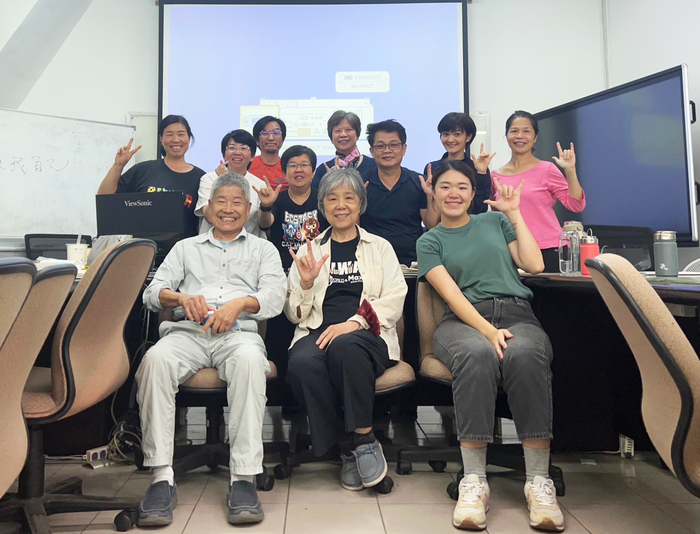Promoting Intellectual Equality for the Deaf: An Exploration of Reading Disabilities by the Institute of Linguistics of National Chung Cheng University

Reading is an important source of knowledge and information. When one opens a book, the eyes
follow the text, and people often unconsciously recite or silently read the words in their minds.
However, for Deaf individuals with reading disabilities, this source is restricted. In order to explore
the difficulties and challenges faced by Deaf individuals in reading, James H-Y. Tai, Professor of the
Research Center for Humanities and Social Sciences (RCHSS), and Director of the Institute of
Linguistics at National Chung Cheng University (CCU) analyzes the linguistic framework of reading
limitations among deaf people in Taiwan to identify potential solutions.
Deaf individuals, as a broad term, refer to those who cannot hear and primarily communicate using
sign language. They possess a high sensitivity to visual space. Conversely, hearing individuals refer
to those with normal hearing. Sign language conveys different meanings through hand gestures,
positions, and facial expressions. The vocabulary system of sign language carries the values,
traditions, and experiences of the Deaf community. An effective system not only aids in
communication but also facilitates integration into society.
"In general, literacy is usually required before reading can occur," said Director Tai. Research has
found that the reading abilities of Deaf individuals worldwide are generally lower than those of
hearing individuals, with Deaf individuals typically only reaching a reading level equivalent to that
of fourth graders in elementary school. Tai mentioned that for both hearing and Deaf individuals, the
transition to the third grade is a critical watershed moment for literacy and reading. Insufficient
literacy skills at this stage make it significantly harder to achieve higher-level reading abilities in
later grades.
In order to promote intellectual equality for the Deaf, Director Tai, and Professor Jane S. Tsay from
the Institute of Linguistics of CCU began planning the Taiwanese Sign Language Online Dictionary
website in 2001. Currently, the dictionary has compiled 4,100 vocabulary entries, 560 commonly
used sentences, and provides bilingual explanations in both Chinese and English, serving as a
resource for researchers and the general public both domestically and internationally. Tai stated,
"The vocabulary of sign language for the Deaf continues to expand with societal changes, as is the
case with sign languages in various countries. Therefore, the dictionary will continue to grow and
expand its vocabulary."
However, the mapping of vocabulary is not always one-to-one. Tai provided an example: in Chinese,
words like 高興"happy," 快樂"joyful," and 愉快"pleased" have nuanced differences in usage, but in
Taiwanese Sign Language, they may only have one corresponding sign. Therefore, since 2022, Tai
has been analyzing the differences in vocabulary and syntax between Taiwanese Sign Language and
Chinese, aiming to understand the challenges deaf individuals face in reading Chinese text.
Additionally, because Deaf individuals lack auditory input, they may encounter difficulties in
segmenting words, phrases, and sentences.
When fluent readers read, they typically scan a sentence using their eyes as nodes, rather than
reading each word consecutively. Tai mentioned that in the future, there are plans to raise funds to
purchase eye-tracking equipment. By tracking the pupils of Deaf individuals, researchers can record
the movement of their eyes while reading Chinese text, understanding their reading abilities and
pinpointing areas of difficulty. The research findings will then be applied in educational settings to
enhance the reading abilities of Deaf individuals, thereby improving their competitiveness in various
fields.

